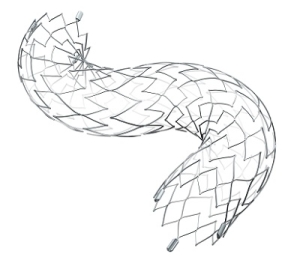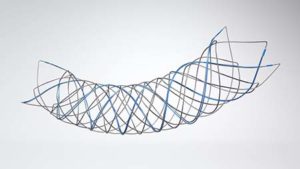
According to research published in the Journal of NeuroIntervential Surgery, Atlas stent-assisted coiling outperformed LVIS Jr in terms of greater obliteration rates and lower in-stent stenosis rates for aneurysms treated. The study was carried out at the University of Pittsburgh Medical Center, Pittsburgh, USA, by Bradley A Gross and colleagues.
Intracranial stent designs that facilitate aneurysm coiling are continuing to evolve. Both Atlas (Stryker Neurovascular) and LVIS Jr (MicroVention) are amongst the new group of stents that have emerged to be compatible with smaller delivery; 0.0165 inch microcatheters, facilitating access to daughter branches with more supple microcatheters.
The current literature discusses the advantages of delivery via the ‘coil catheter,’ however, omits important potential limitations of both the Atlas and LVIS Jr stents. Gross et al’s research sought to clinically compare the two stents, with an emphasis on comparative rates of both technical success and complications.
The study reviewed a prospectively maintained endovascular database, finding 27 patients undergoing deployment of the LVIS Jr, and 37 undergoing Atlas stent placement for aneurysm coiling. There was no significant difference in patient age, sex, previous aneurysm treatment, mean aneurysm size, or aneurysm location. Of five previously treated aneurysms in the Atlas cohort, two had previously ruptured, whilst, of eight previously treated in the LVIS Jr cohort, four had previously ruptured (more than one year before). Otherwise, all were unruptured.
The coil technique—jailing—was similar in both cohorts. The authors note that, whilst the closed-cell design of the LVIS Jr allows for improved retrieval ability and visibility, the open-cell design of the Atlas eliminates foreshortening and allows for better predictability of the proximal landing point of the stent (denoted by the marker). Available in 4mm and 4.5mm diameters, Atlas stents are advantageous in their use for ICA and vertebral aneurysms; with only one ICA branch aneurysm treated with LVIS Jr, compared with 10 treated with the Atlas. Otherwise, basilar apex and anterior communication artery were the most frequently treated aneurysms in both cohorts.

During the procedure, incomplete stent expansion was seen in both cohorts (7% for LVIS Jr, 3% for Atlas), but stent thrombus formation was more frequent after deployment of LVIS Jr (11% of cases vs 0% for Atlas). In this study, all cases of in-stent clot formation were asymptomatic—a phenomenon which has led this finding to likely be unreported within previous studies.
Initial clinical results showed that periprocedural ischaemic complications were seen in four patients after LVIS Jr stent deployment (15%) and in one patient after Atlas stent deployment for coiling (3%).
Post-treatment MRI scans were obtained in 23 Atlas patients and 21 LVIS Jr patients. Among the 23 patients with Atlas stents, 35% had DWI lesions; 13% of patients had single punctate lesion and 22% had multiple lesions. Among the 21 patients with LVIS Jr stents, 38% had DWI lesions; 19% had single punctate lesions, and 19% had multiple lesions. Rates of DWI lesions after treatment did not significantly differ between the two groups.
Clinical follow-up was available for all the 37 patients undergoing Atlas stent coiling over a mean period of 12.7 months, and available for 26/27 patients undergoing LVIS Jr stent placement over a mean period of 17 months. In both cohorts, no patients displayed clinical evidence of delayed ischaemic events or sustained aneurysm rupture in follow-up. Only one patient that underwent LVIS Jr stent placement had to be re-treated.
Direct comparison between the two cohorts showed a significantly greater rate of aneurysm dome filling among patients treated with the LVIS Jr stent at the last angiographic follow-up (19% vs 0% for Altas, p=0.04). Additionally, there was a significantly greater rate of in-stent stenosis among patients that underwent stenting with LVIS Jr (19% vs 0% for Altas, p=0.04).
Improvement in aneurysm occlusion in patients with initial Raymond 2 or 3 occlusion after LVIS Jr coiling has previously been attributed to a potential ‘flow diverting’ property of the stent. Yet, according to the authors, given similar rates of improvement seen for the Atlas stent, it is difficult to consider that the improvement occurred as a result of a hypothetical ‘flow diverting’ property of the stent itself. The most intriguing result remains the significant difference in rates of in-stent stenosis at follow-up. This finding is less likely to be influenced by biased and may more directly reflect a clinically relevant difference in stent design and resultant performance. Regardless, a larger, multicenter and more representative sample, with a randomised comparison of the two stents, and a longer follow-up period would be preferable for future explorations of stent-assisted aneurysm coiling.













